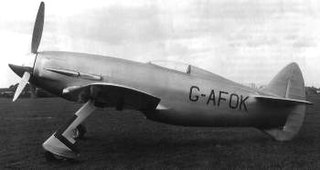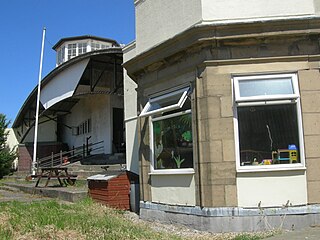History
Heston Aircraft Company Ltd was founded on 10 August 1934, being renamed from Comper Aircraft Company Ltd, that had moved to Heston aerodrome in March 1933, having previously built 40 Comper Swifts at Hooton Park aerodrome. Most of the directors of Comper Aircraft, including Nick Comper, resigned and gave up the assets to a new group of investors and directors. The new board was headed by Sir Norman J. Watson and included Brindley 'Bryn' R.S. Jones and George A. Lingham. Chief designer was George Cornwall, and Chief Test Pilot was Edmund G Hordern. On 8 November 1935, a new company was formed with the same name that took over the existing business and personnel. The company continued to support Comper aircraft and owners, but discarded its own Comper aircraft and assets. [1] [2]

The first aircraft type to be designed and built by Heston Aircraft Company was the Heston Phoenix, a high-performance five-seat private owner and commercial aircraft, six of which were completed between 1935 and 1939. [2]
In 1936 the company built the Hordern-Richmond Autoplane, a twin-engined two-seat low-wing monoplane that had been designed by the firm's test pilot E.G. Hordern in collaboration with the Duke of Richmond and Gordon. The sole example was registered G-AEOG. [3]
In 1937 the company designed the Heston T.1/37 trainer, and the first of two prototypes flew at Heston in 1938 with serial L7706. It was not selected for production for the RAF. [4]
In 1938 the company started work on the Heston Type 5 Racer which was to be used in an attempt on the world's air speed record. The aircraft had been designed by Napier & Son and had an estimated maximum speed of 480 mph. Registered G-AFOK, it first flew at Heston in June 1940 but was damaged on landing and a second example was not completed. [5]
In 1941 the company built the Boulton Paul P.92/2 half-scale piloted flying model of the Boulton Paul P.92, the full-scale contract for which had been cancelled in May 1940. The first flight of the sole P.92/2, serial V3142, was at Heston in early 1941. [6]
In 1947 the company designed and built the Heston JC.6, also known as the Heston A.2/45, that was intended to meet a Royal Air Force requirement for a new air observation post aircraft. Two examples were completed, serials VL529 and VL530 (not flown), but the competition was won by the Auster AOP.6. [7]
In 1948 the company built the Youngman-Baynes High Lift, and the sole aircraft first flew at Heston on 5 February 1948 with military serial VT789, later registered G-AMBL. [8]















